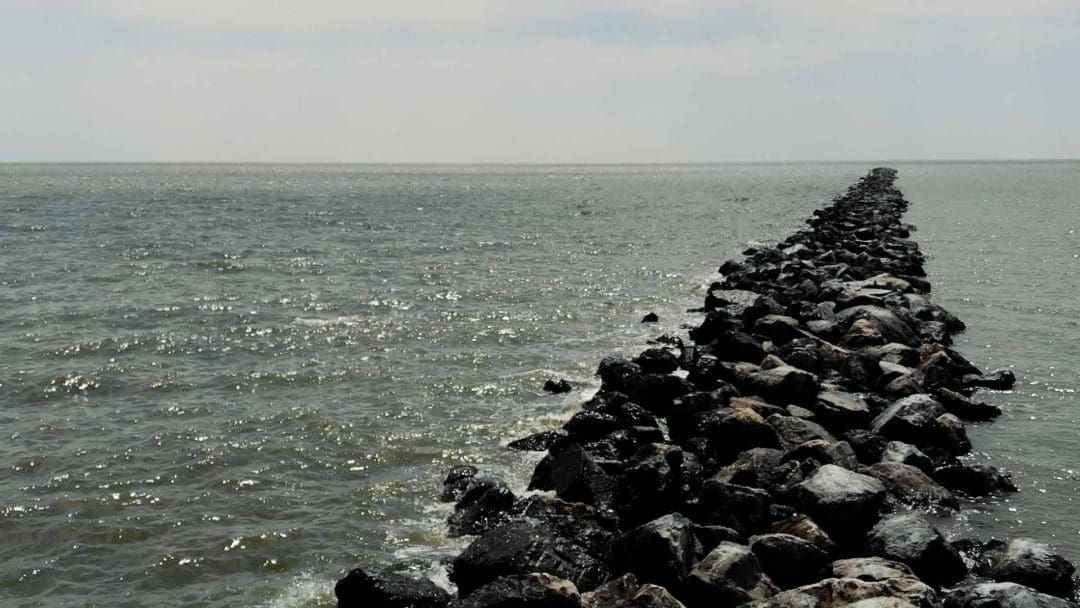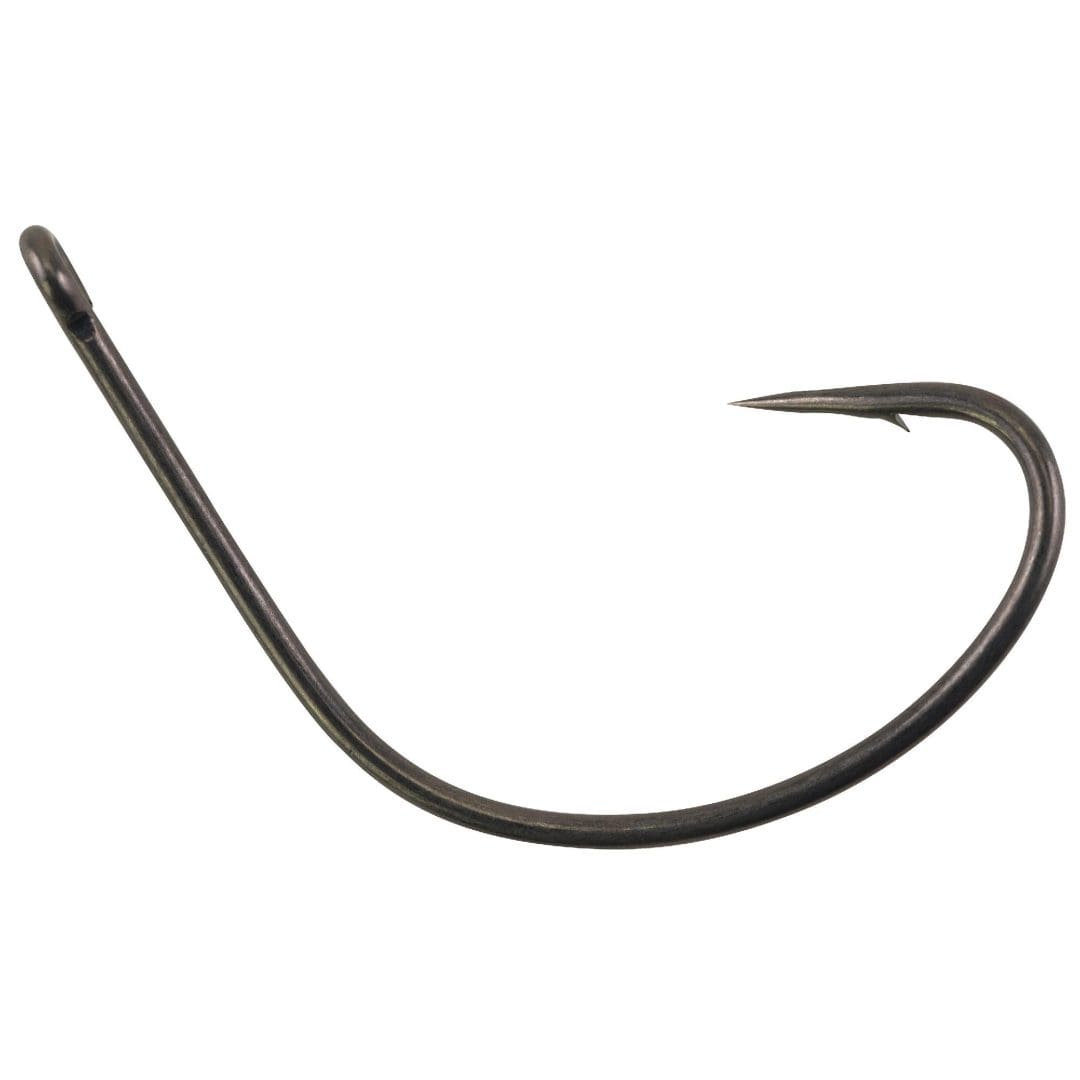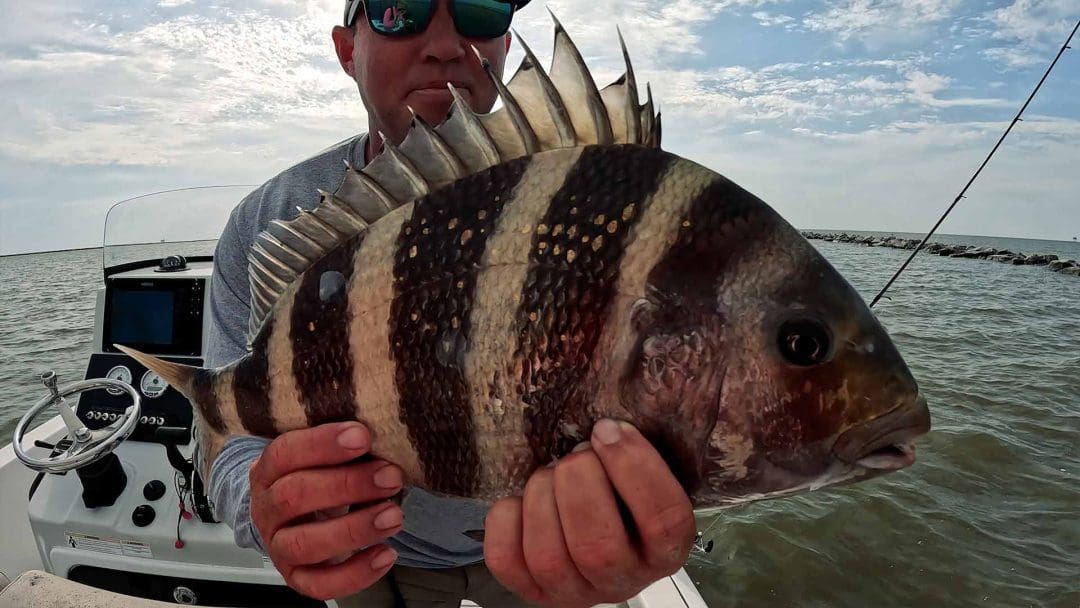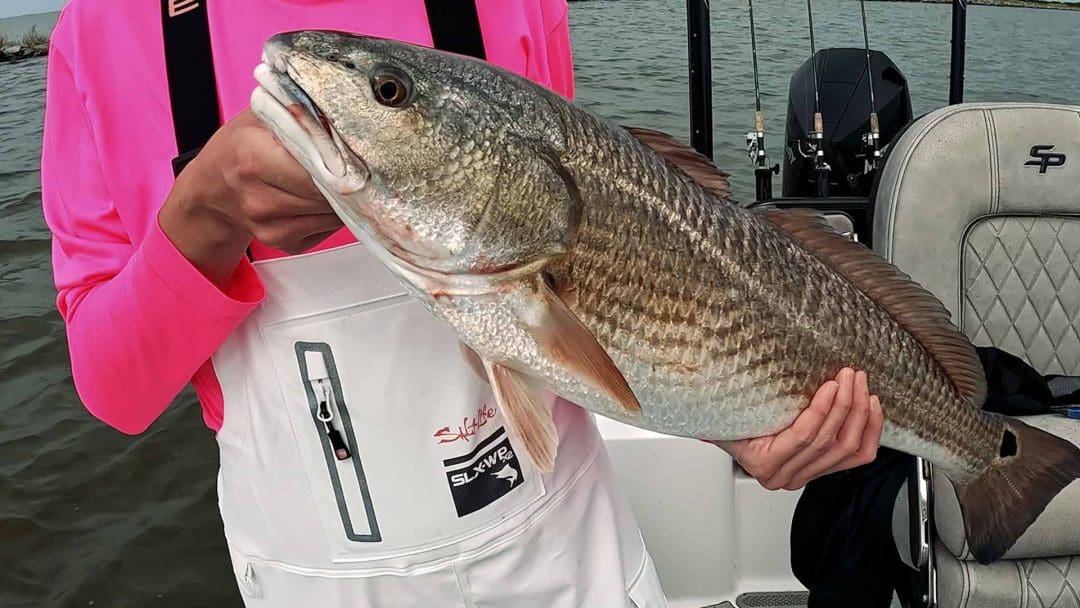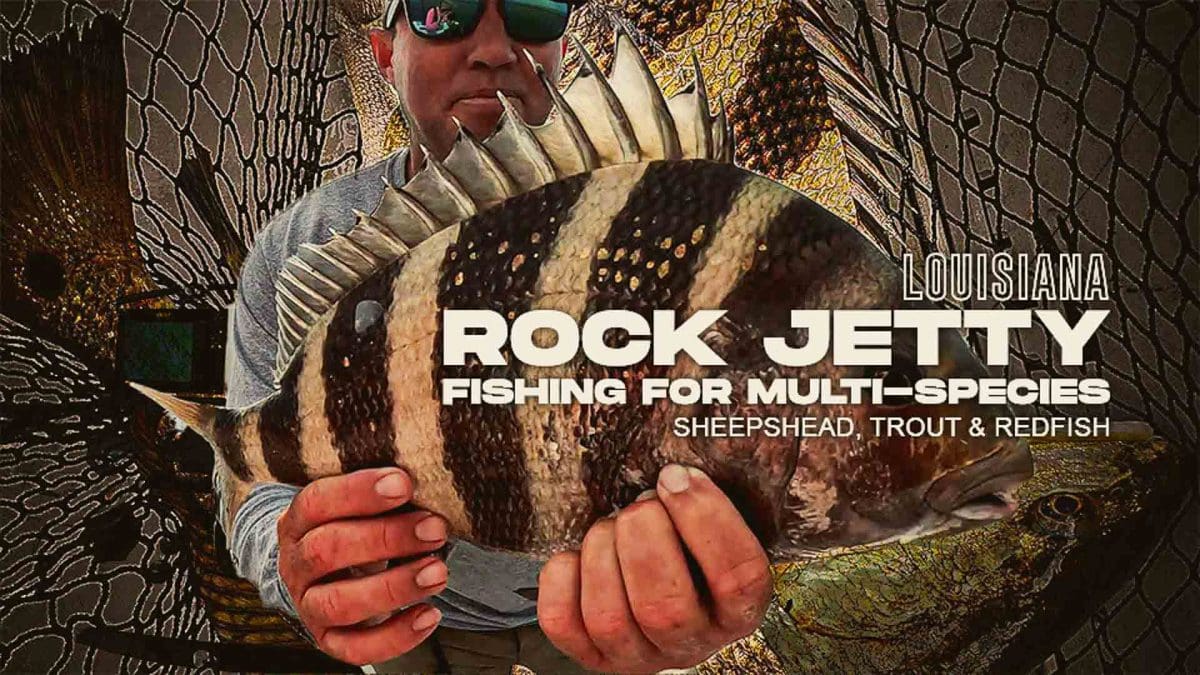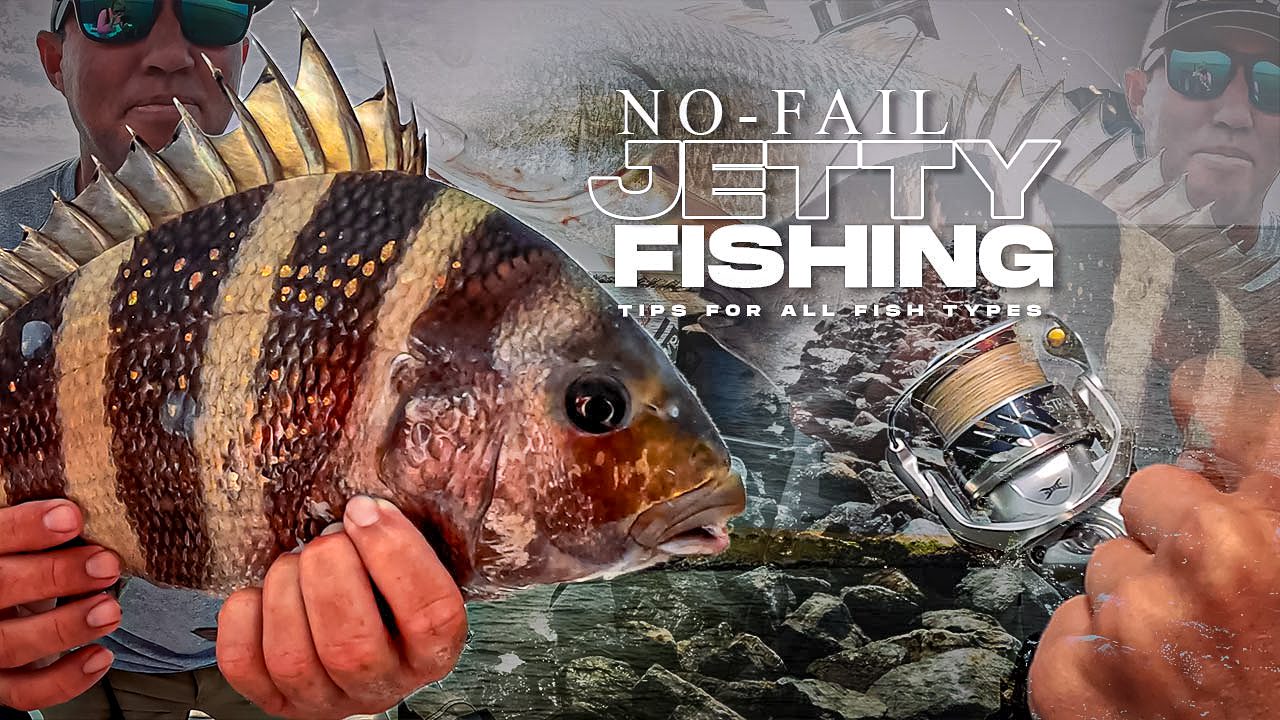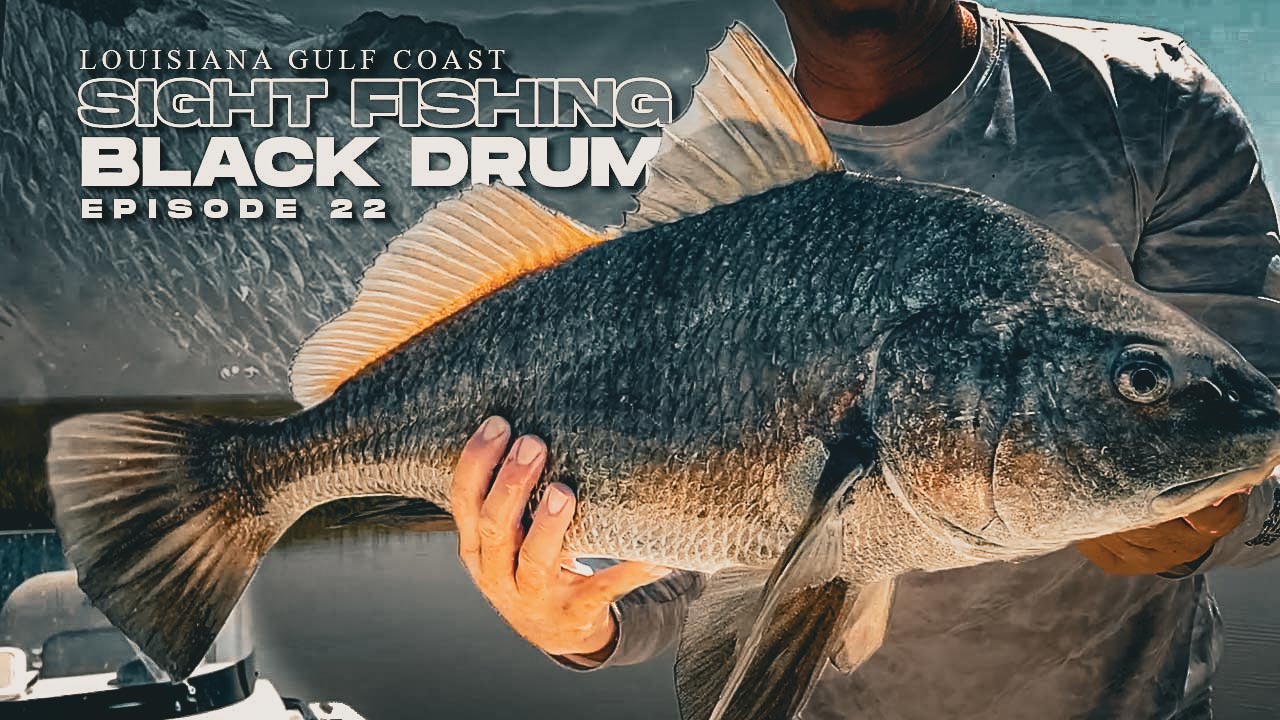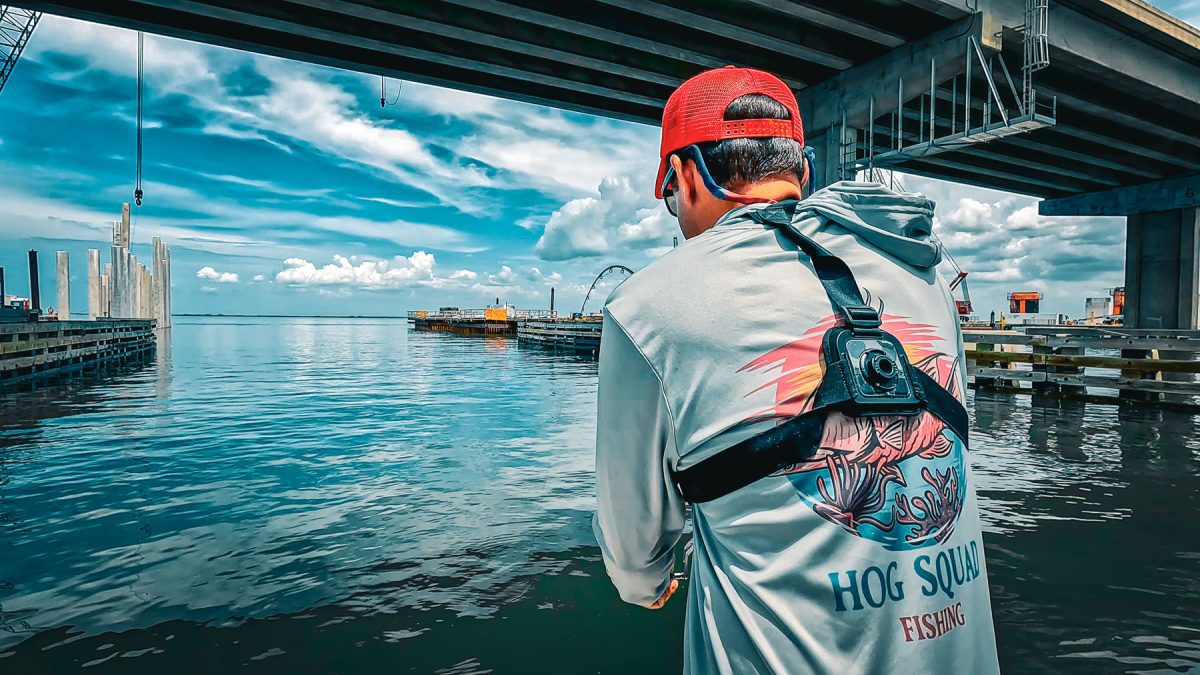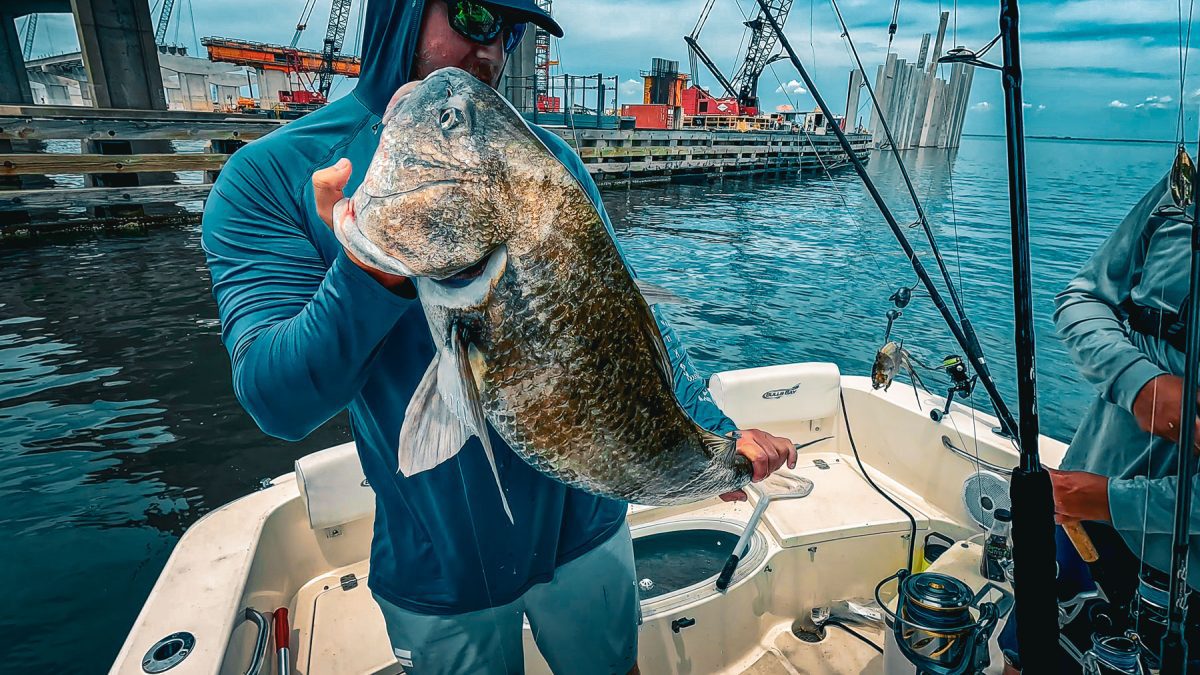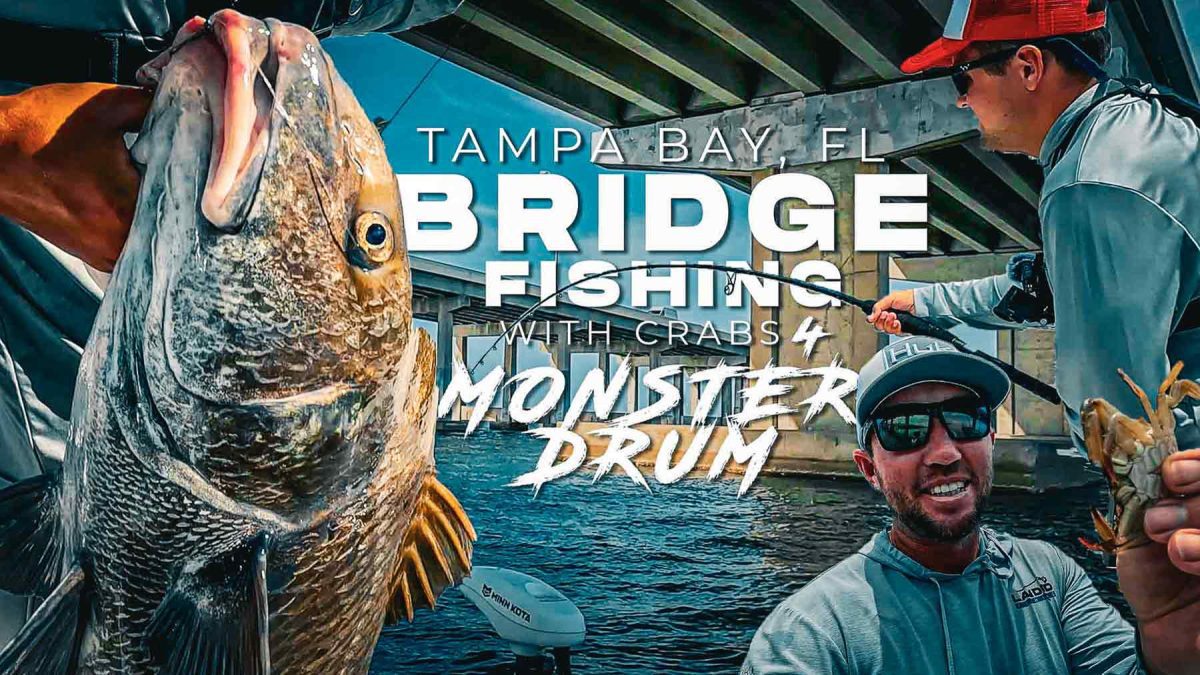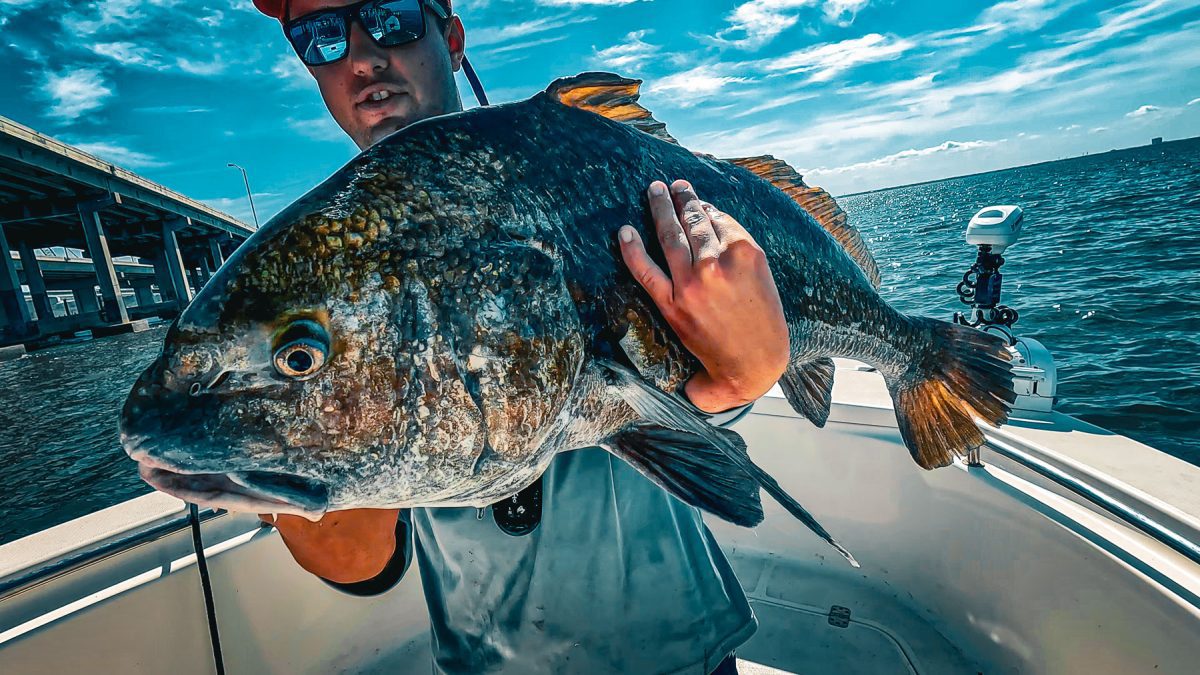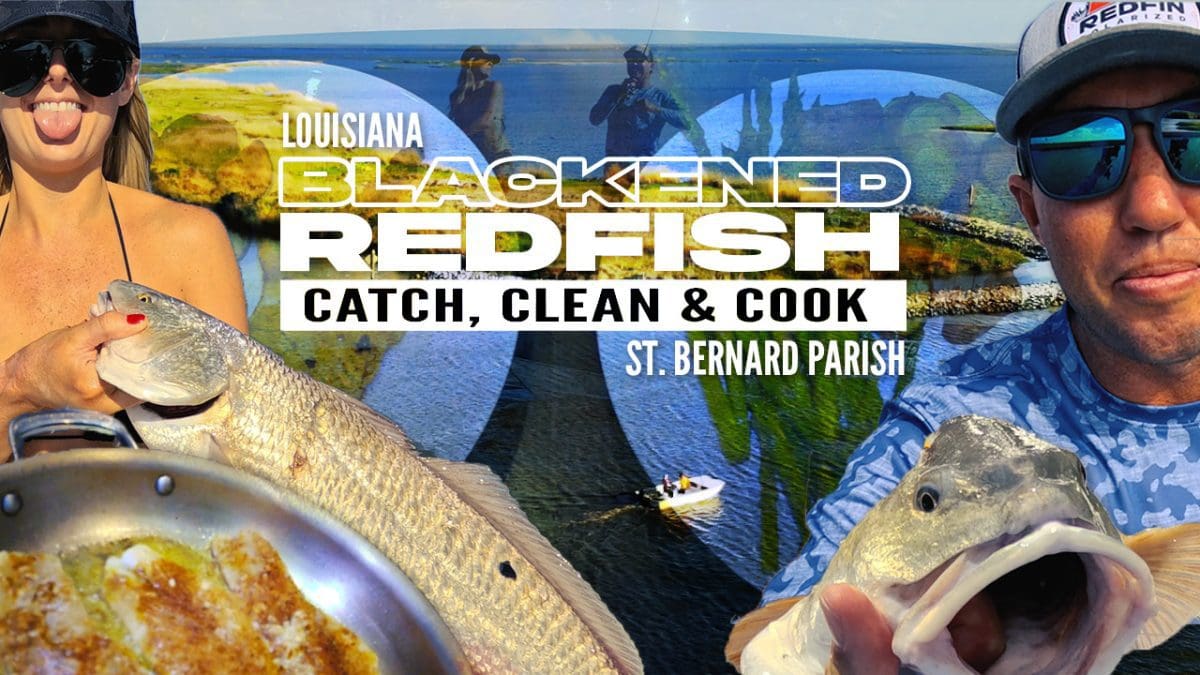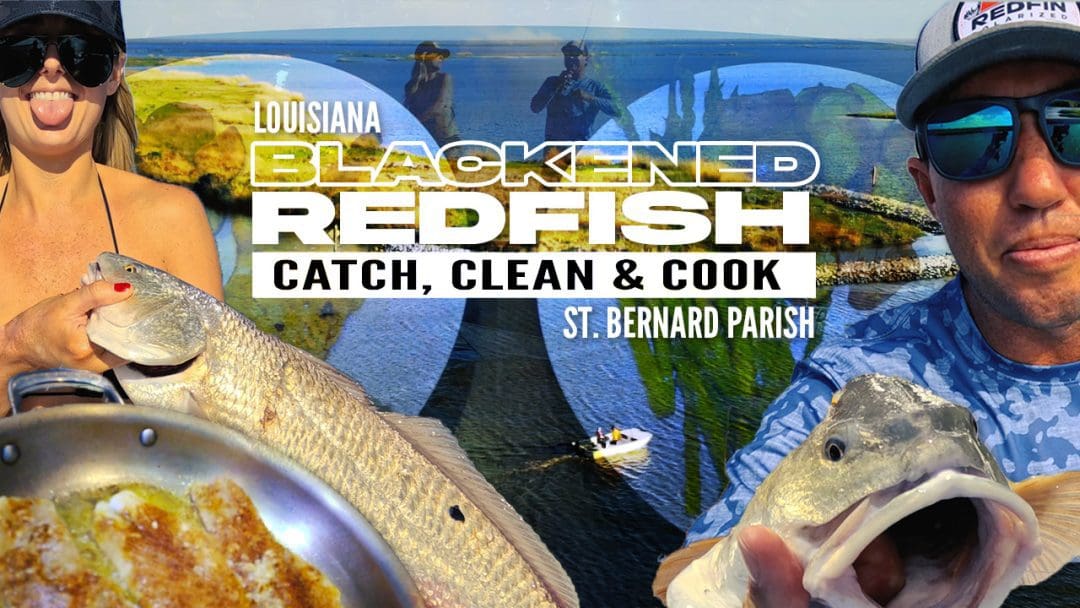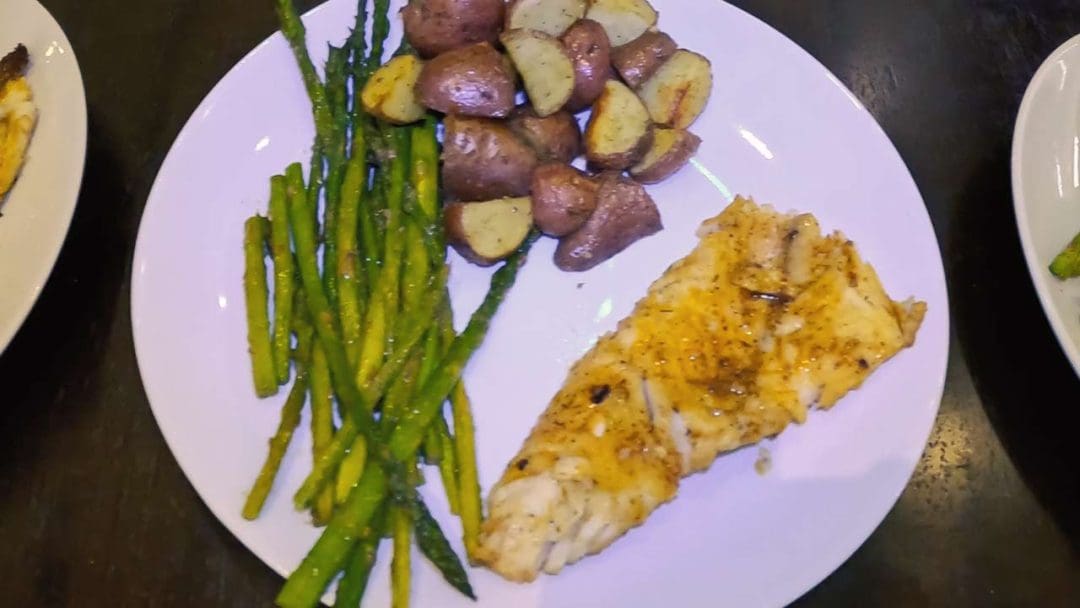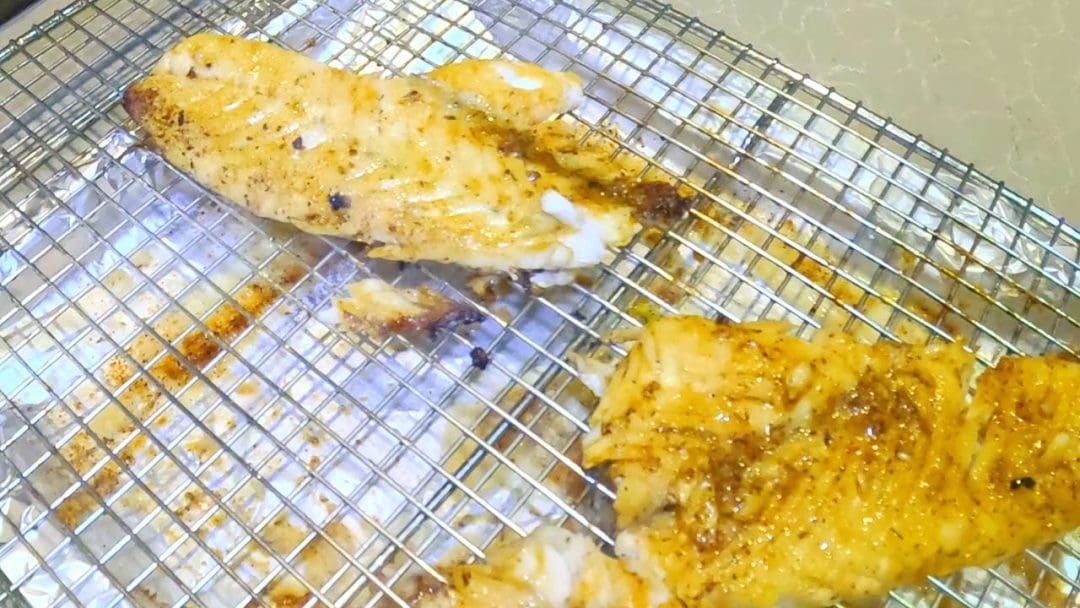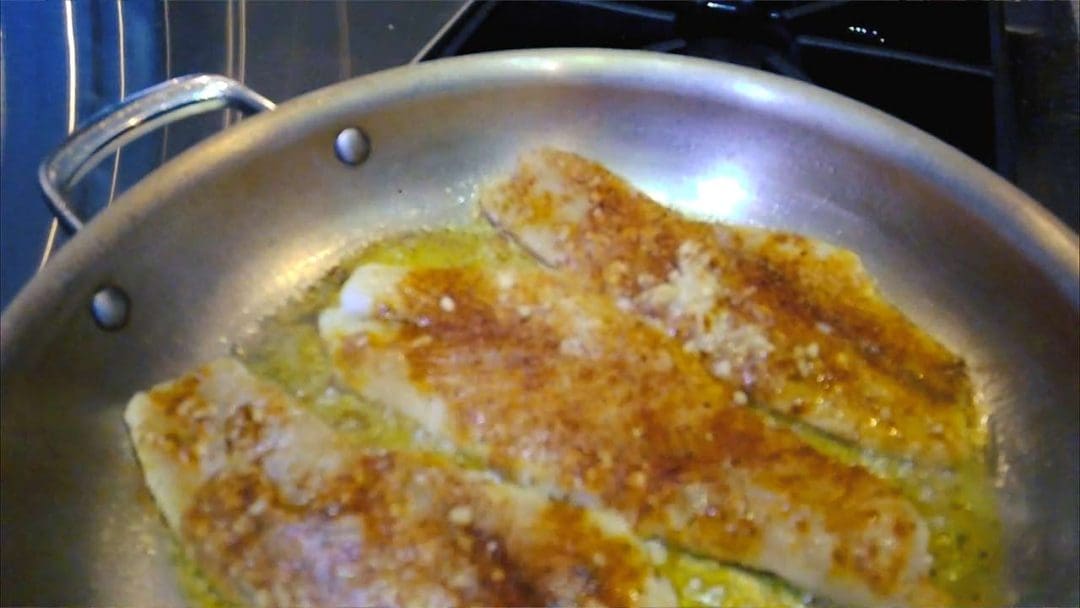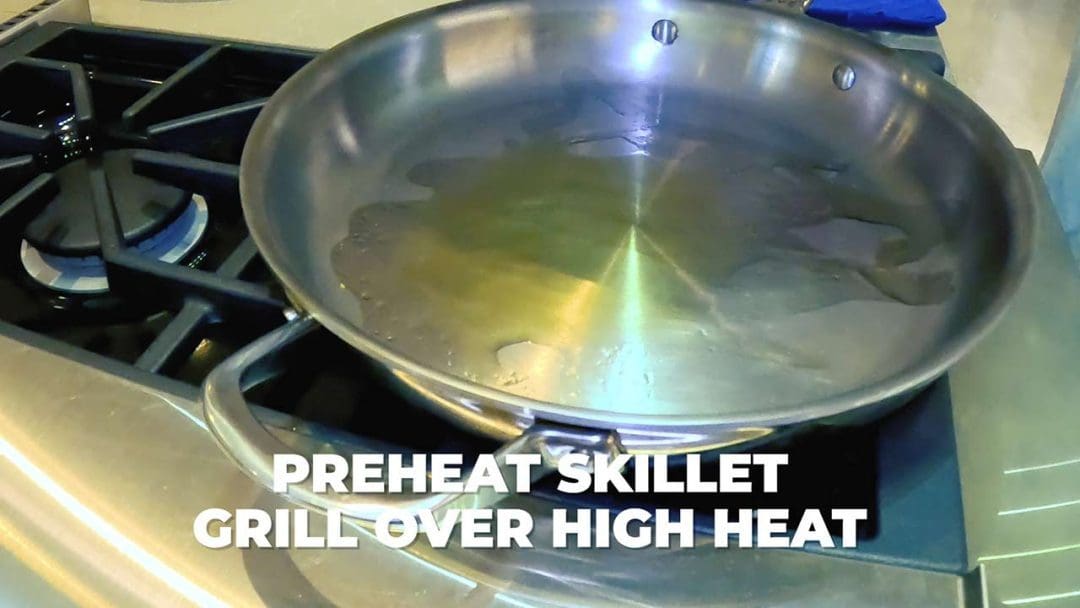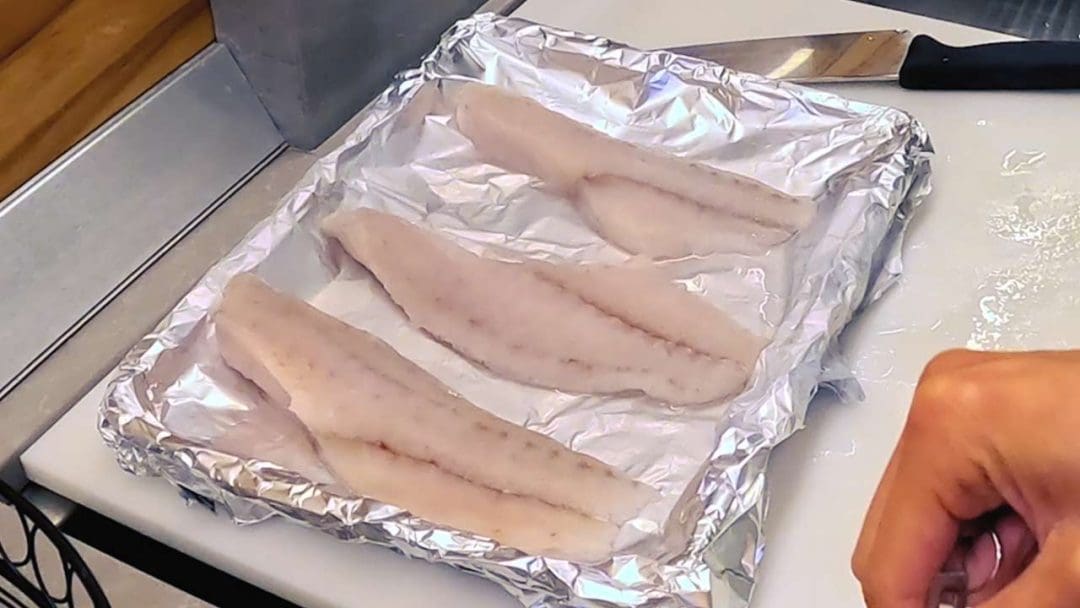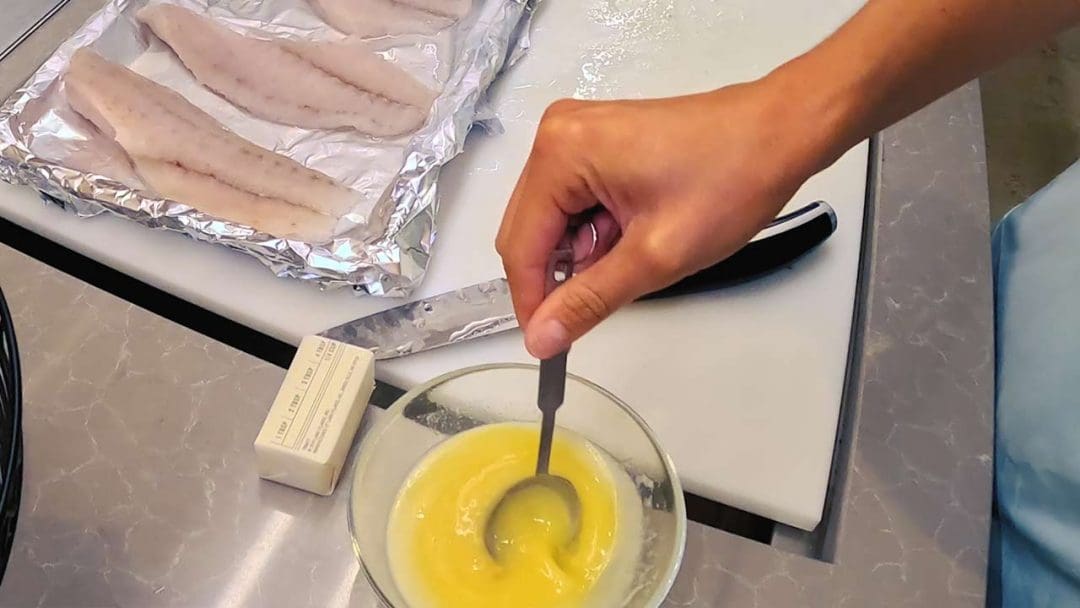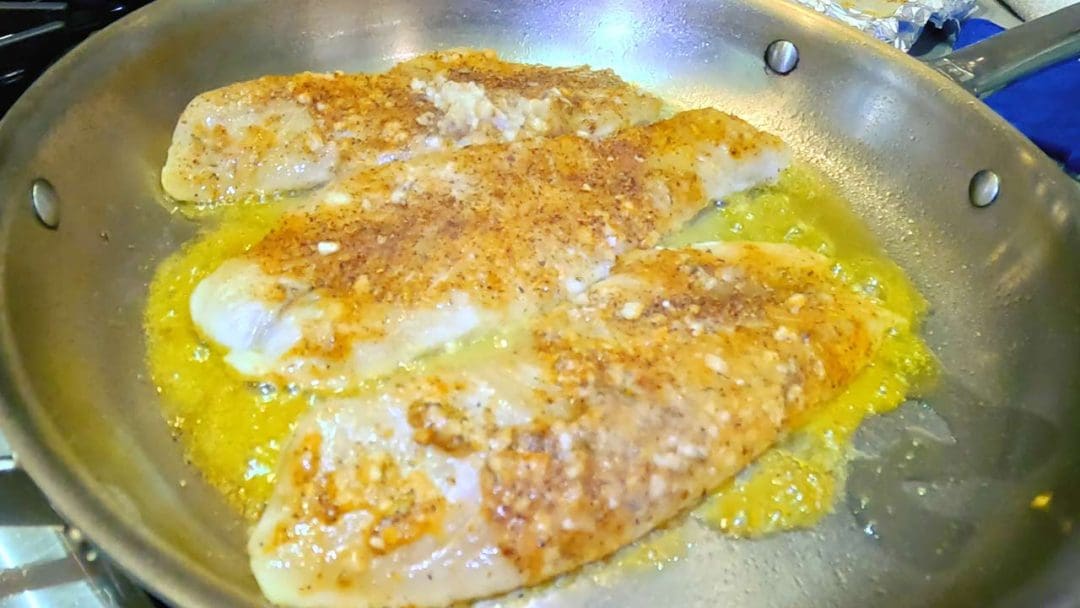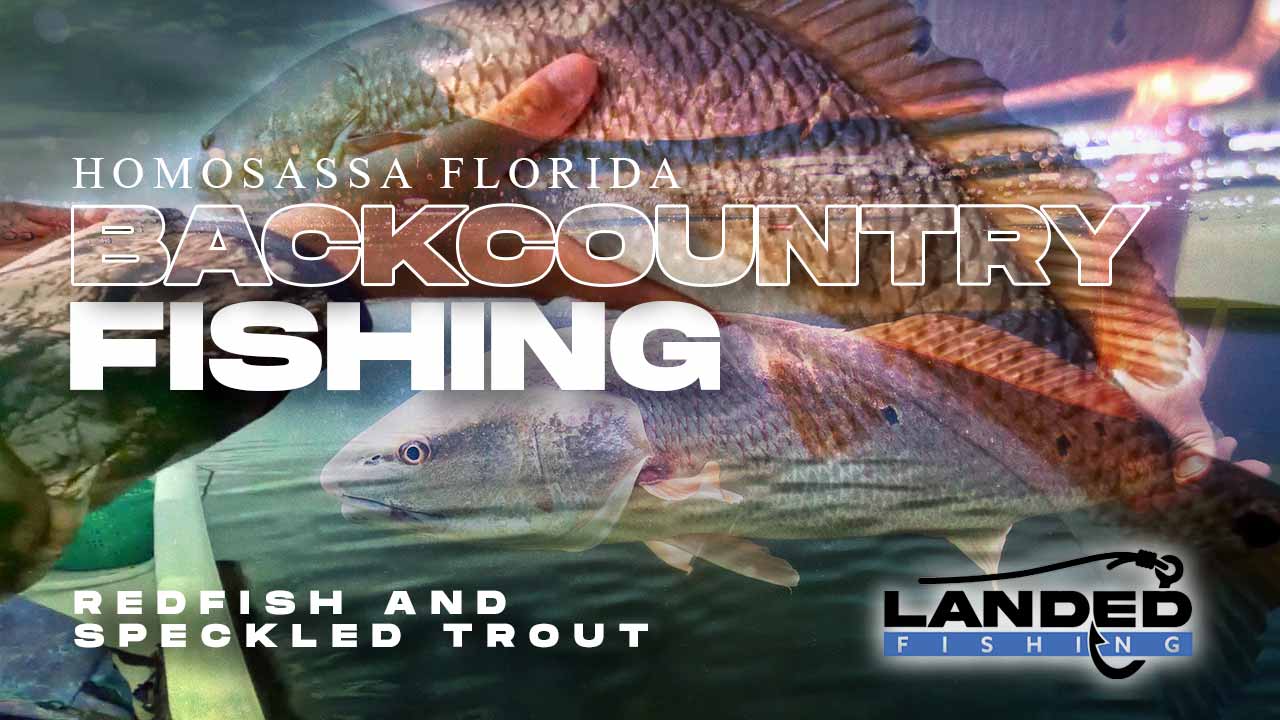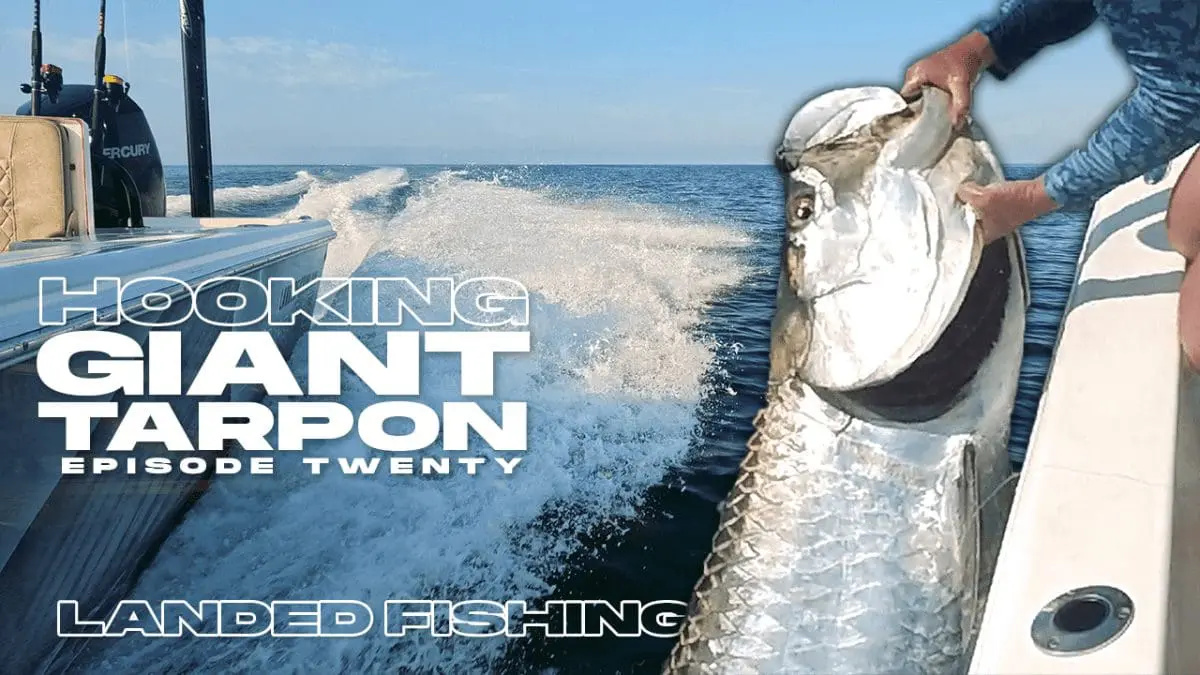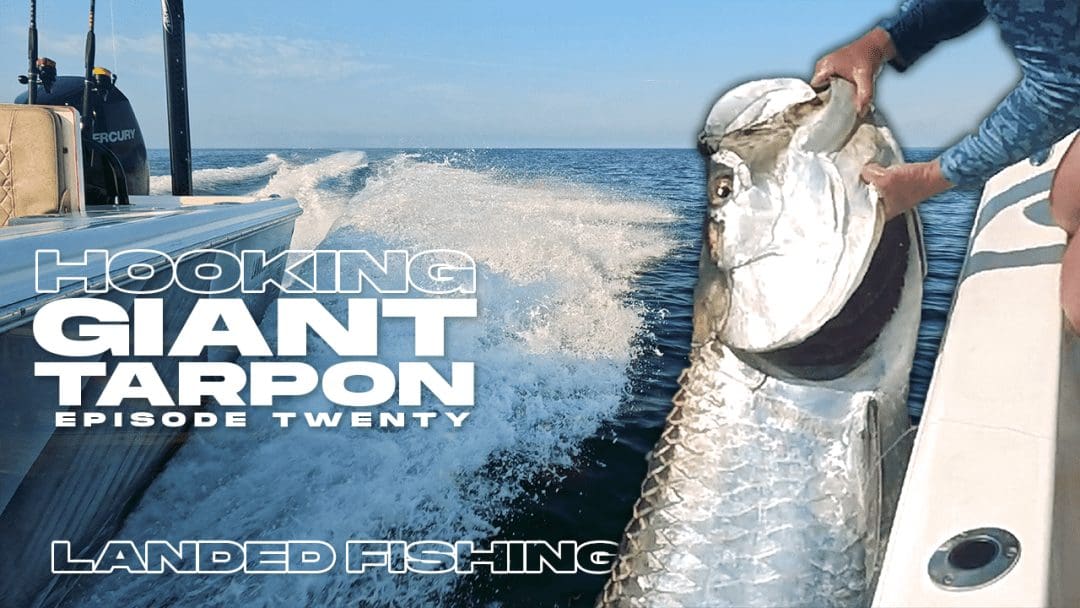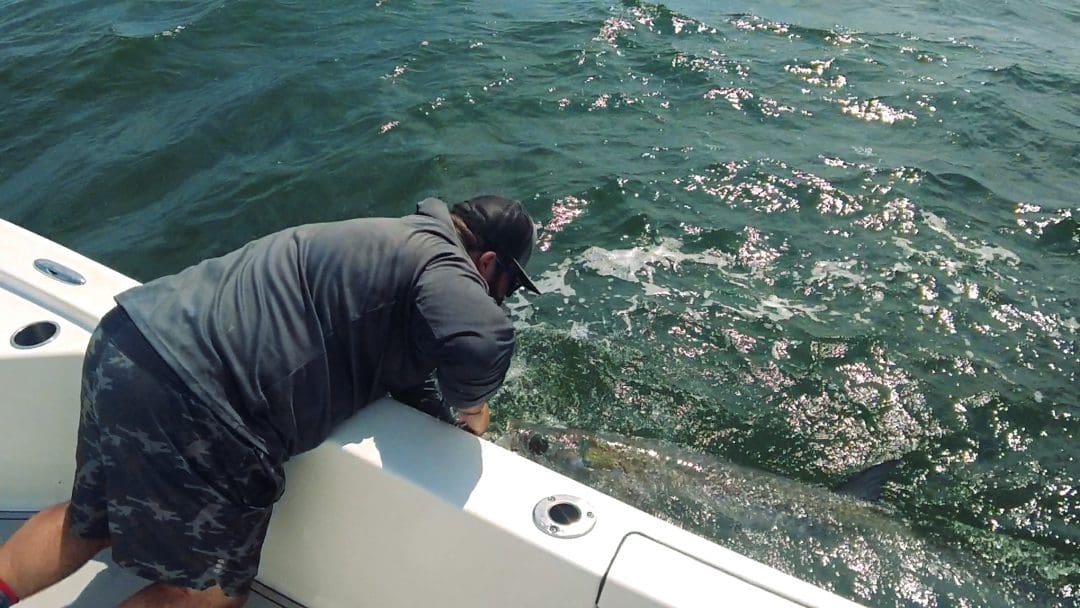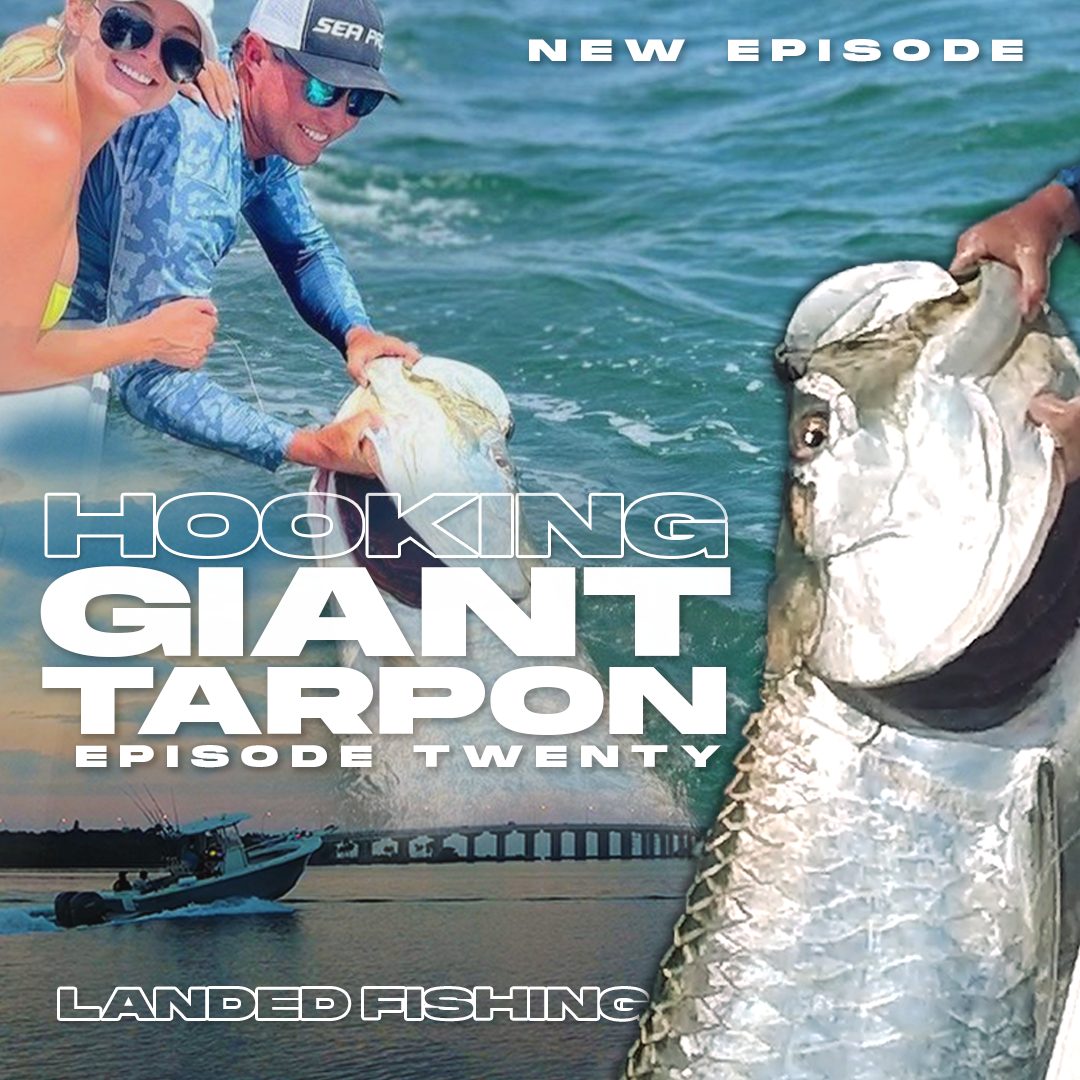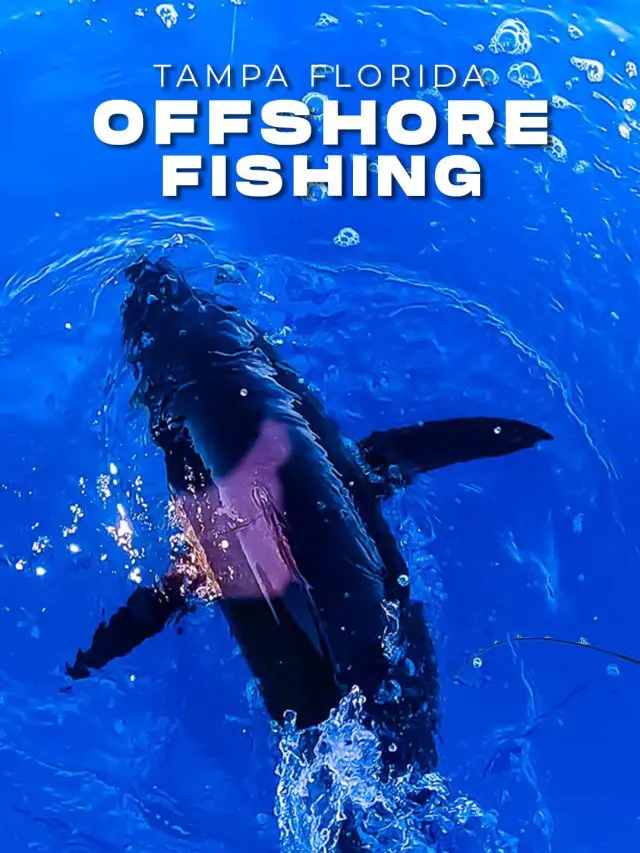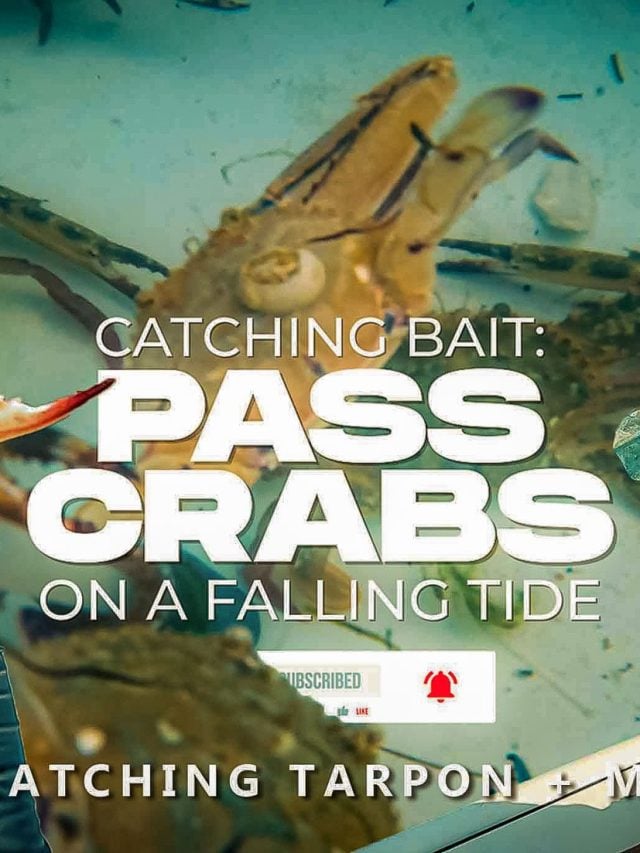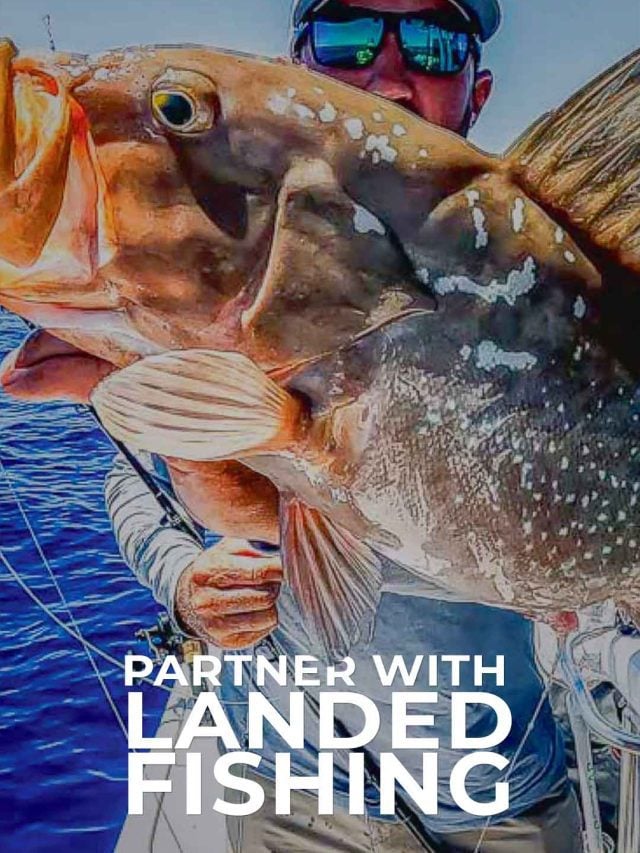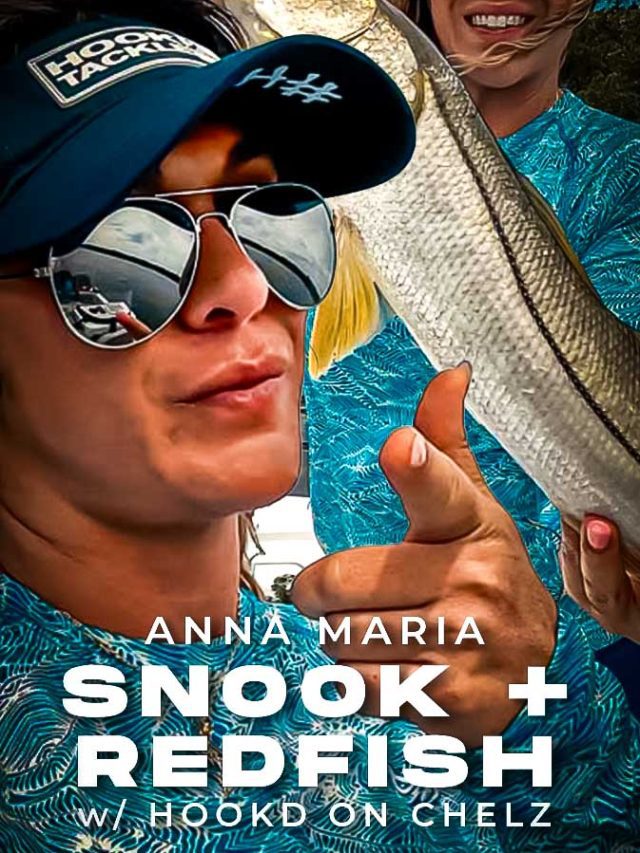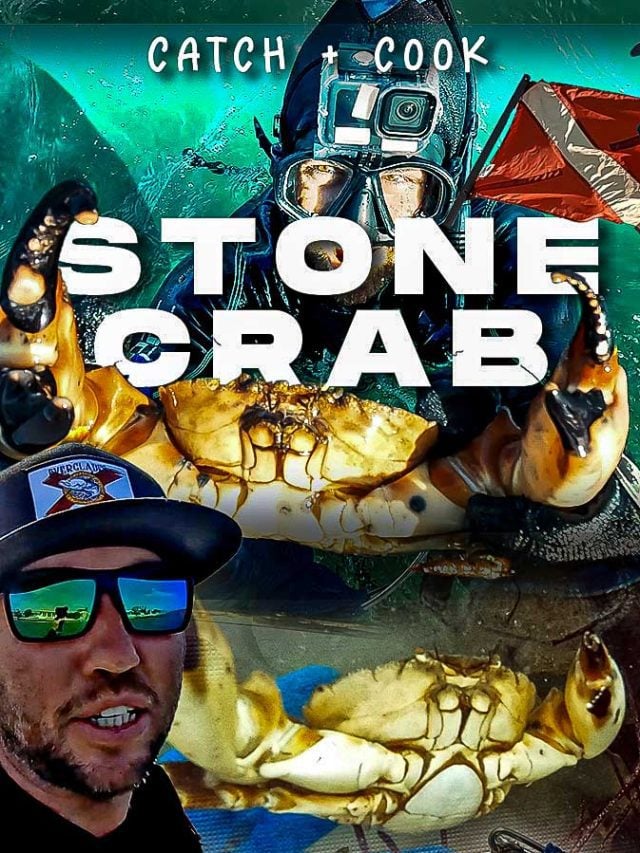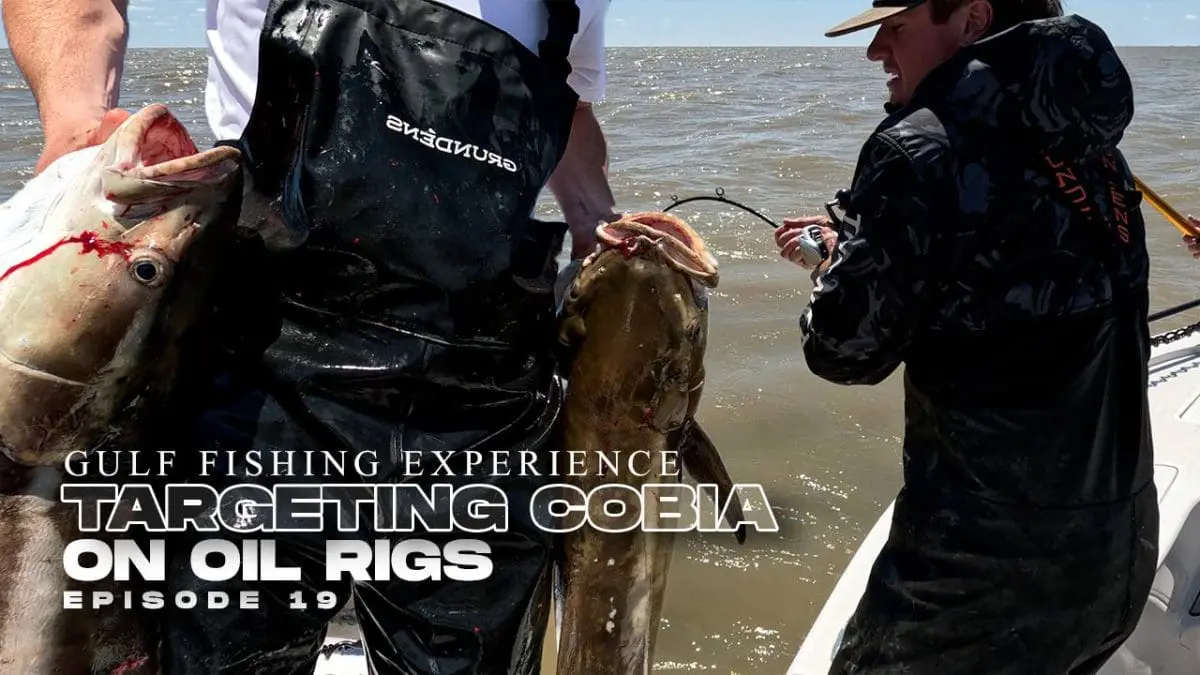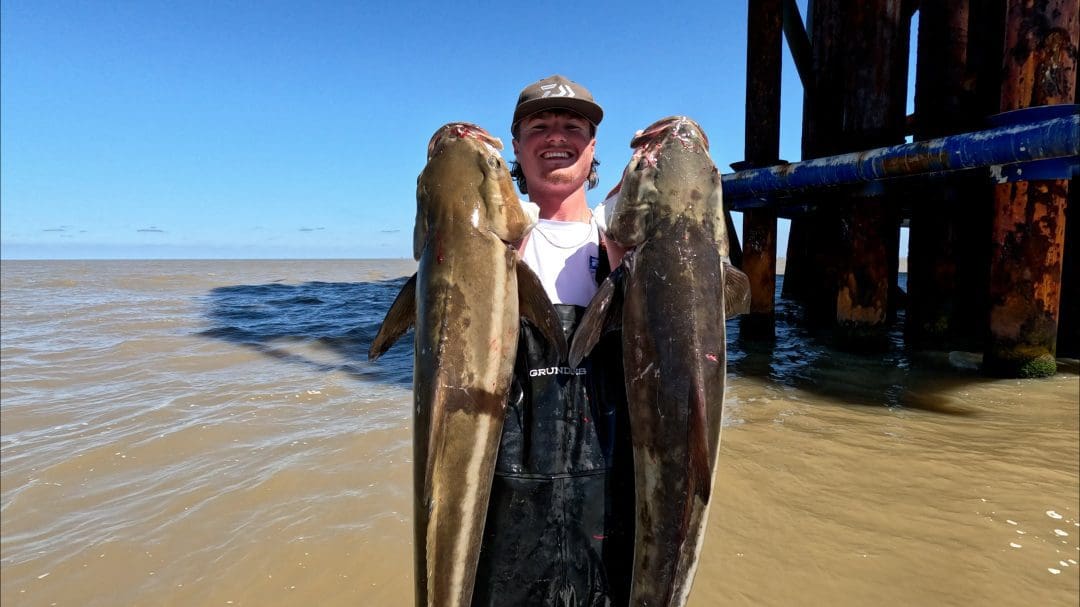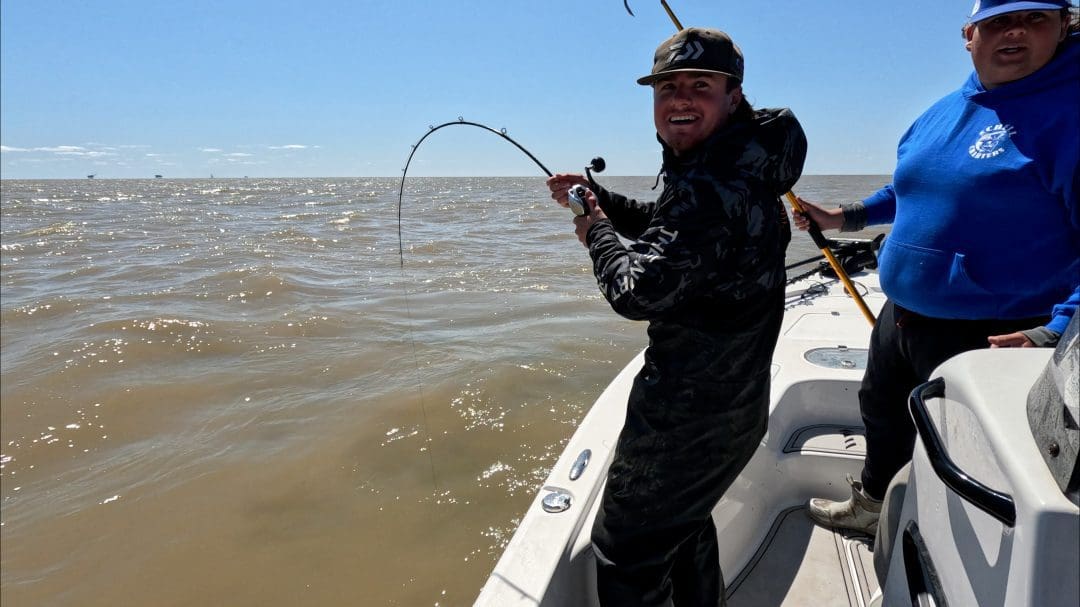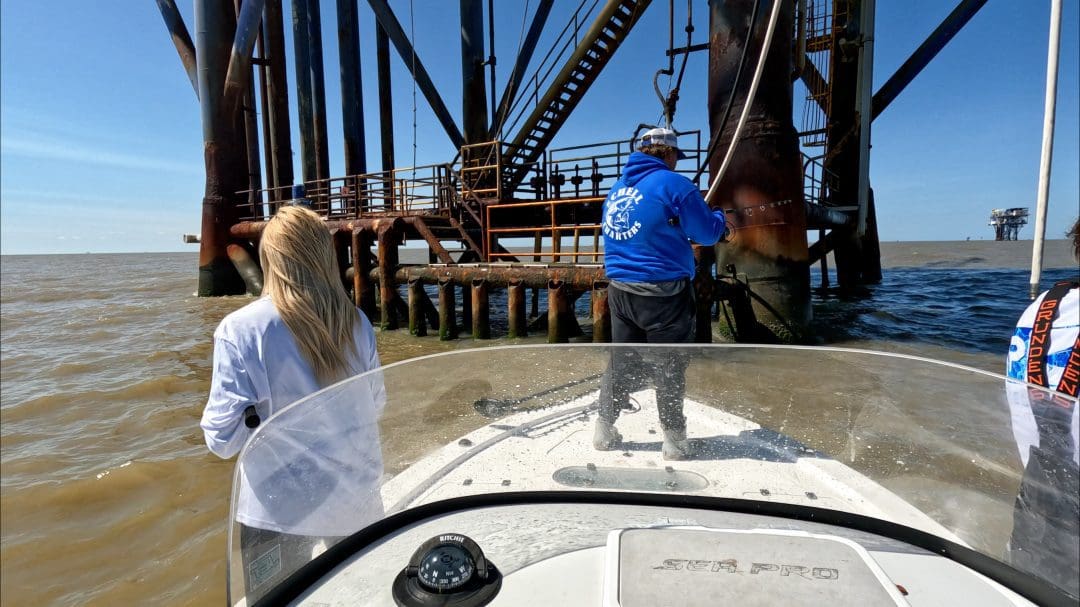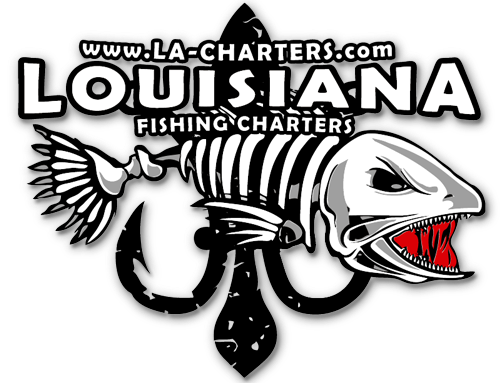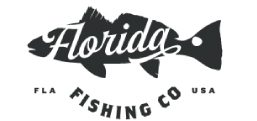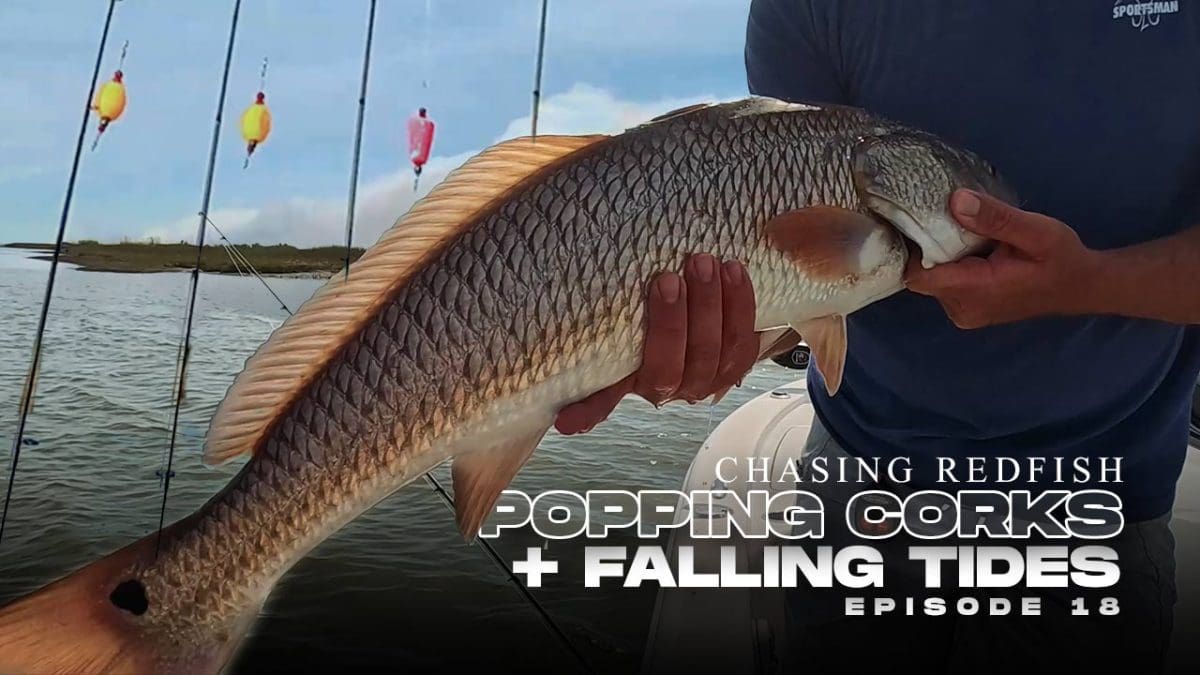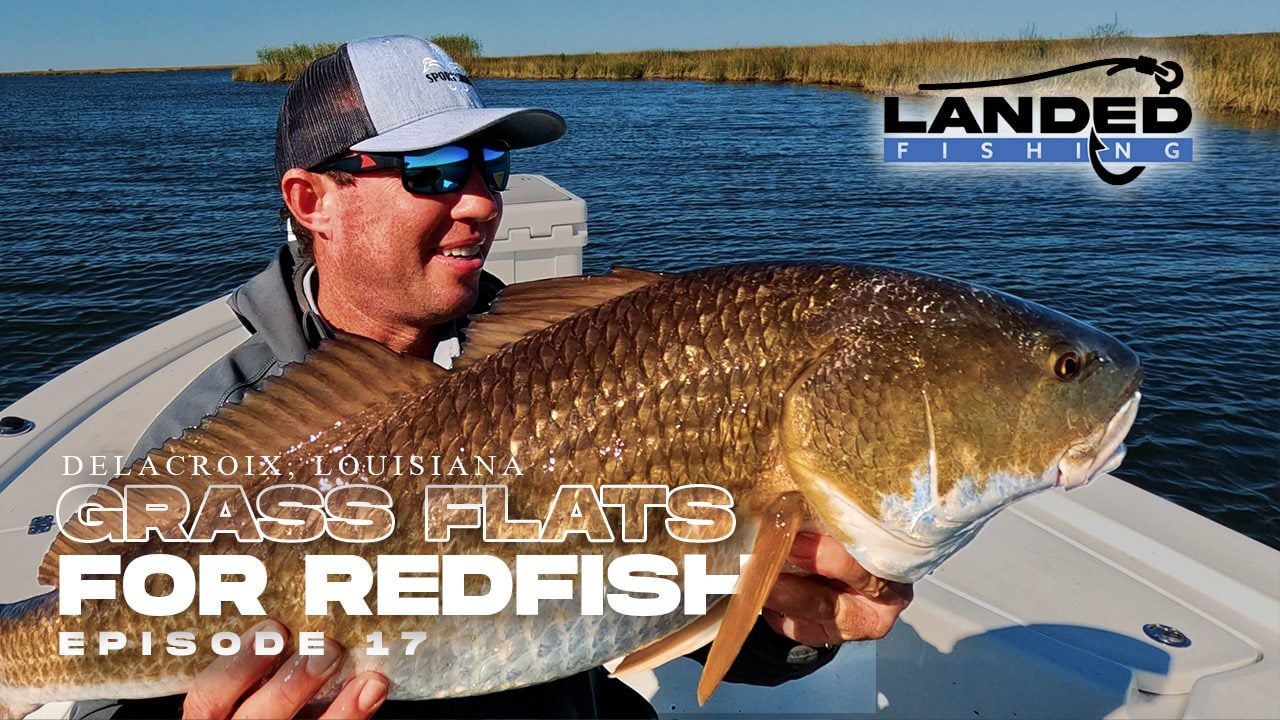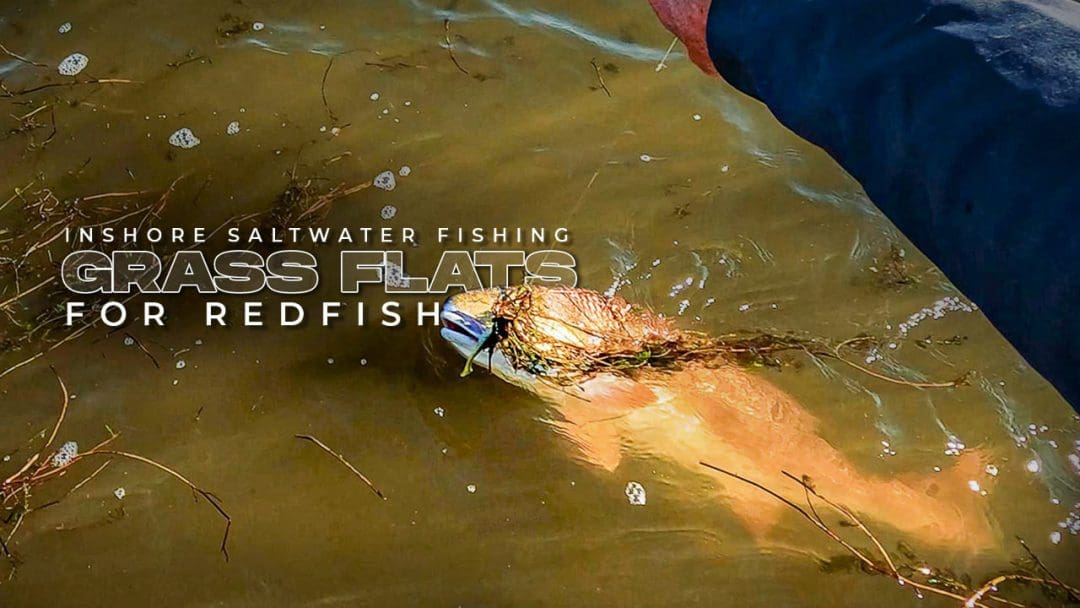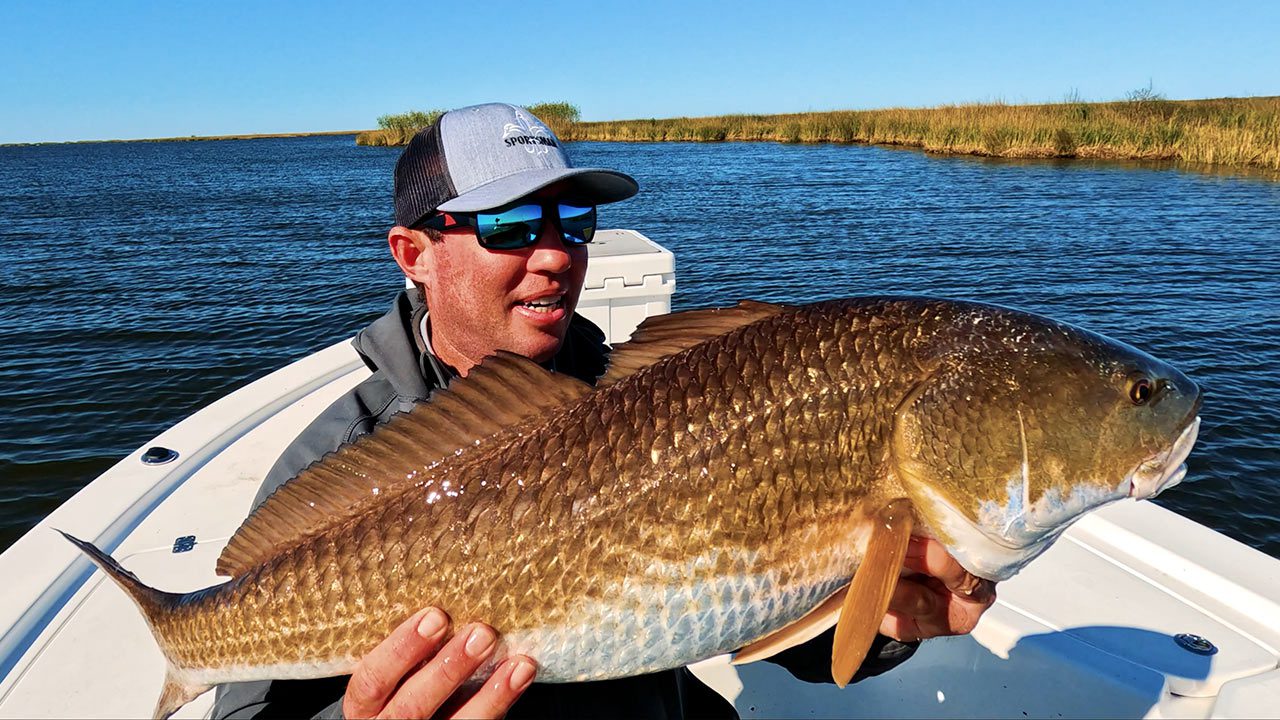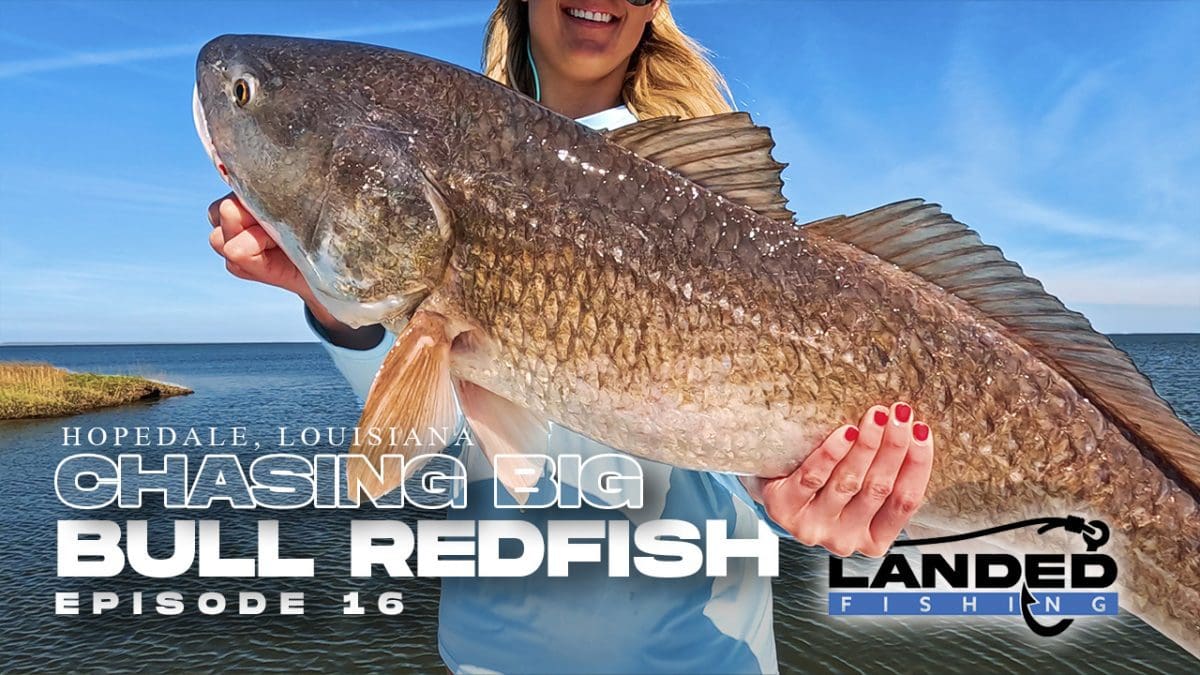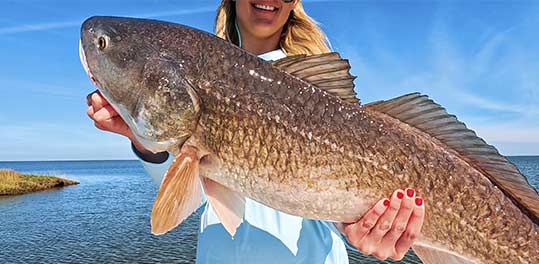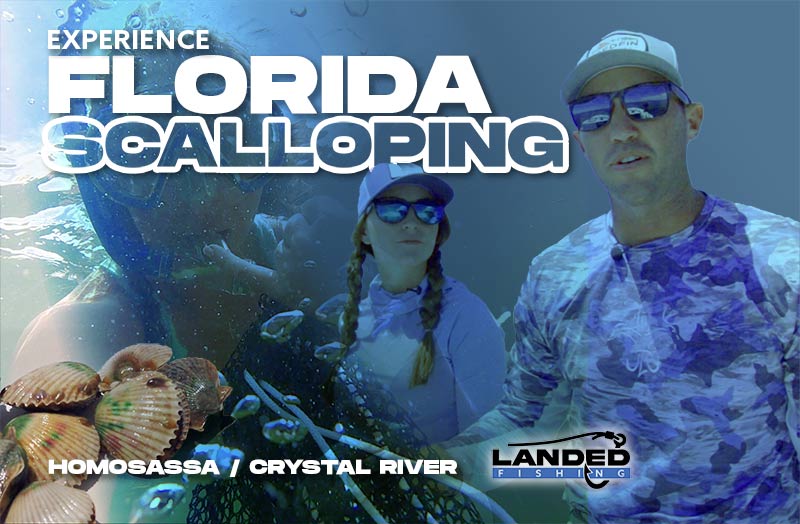Watch Video: Catching Redfish on Grassflats
Fishing Location: Delacroix Louisiana
Delacroix is a small community located in St. Bernard Parish, Louisiana, in the United States. It is situated just east of the Mississippi River and is known for its excellent inshore fishing opportunities.
The grass flats along Louisiana’s coastline are particularly famous for holding large numbers of Redfish.
Fishing Grass Flats for Redfish
Grass Flats, in fishing, refer to shallow coastal areas covered with beds of submerged aquatic vegetation, typically seagrasses.
They serve as vital habitats for many juvenile fish species and are popular fishing spots due to the rich biodiversity they support.
Anglers who engage in flats fishing typically use shallow-draft boats or even wade in the water.
What is “Flats Fishing”?
A specialized technique of inshore saltwater fishing that involves targeting game fish in shallow, often clear waters known as “flats.” These shallow areas can include seagrass beds, sandy bottoms, and shallow channels found along coastlines and within estuaries.
This method requires stealth, patience, and a keen understanding of the fish’s behavior and habitat. Flats fishing is popular for pursuing species like bonefish, tarpon, redfish, and permit, offering an exciting challenge due to the fish’s wary nature and the necessity for accurate casting and presentation skills.
Tackle and Equipment: Redfish
When targeting Redfish in the grass flats of Delacroix, you will want to use medium to heavy spinning or baitcasting tackle.
A 7-foot rod with a 3000-4000 size spinning reel or 7-foot baitcasting rod with a 7.1:1 gear ratio reel is ideal. You will also need braided or fluorocarbon line in the 10-20 lb range.
For lures, you will want to use soft plastic baits like paddle-tail or shrimp imitations on a jig head or weedless hook. Topwater lures like poppers and walkers can be very effective, especially in the early morning or late afternoon when the water is calm.
Redfish Lures with Color & Patterns
When targeting redfish in Louisiana, consider using bright-colored lures with lifelike patterns. Opt for shades of chartreuse, pink, orange, or white to enhance visibility in murky waters.
Soft plastic baits like paddle tails or shrimp imitations rigged weedless or on a jighead work well in grassy or structure-rich areas.
Topwater lures like poppers and walkers create surface disturbances for shallow water or low-light conditions. Adapt your lure selection based on water conditions and fish behavior for better results.
Best Lures for Shallow Water Redfish
Determining the best lures for redfish for any specific area, involves understanding the behavior and feeding patterns of these popular inshore game fish.
Redfish are known for their aggressive nature and tendency to feed near the bottom, making lures that mimic their prey an effective choice.
Soft Plastics
Soft plastic baits like paddle tails, shrimp imitations, and jerkbaits are highly effective when rigged on jig heads and worked along the bottom.
Topwater Lures
Topwater lures, such as poppers and walking baits, can also be successful during low-light conditions or when targeting actively feeding fish.
Spoons
Spoons and spinnerbaits can also be productive, especially when retrieved at varying speeds to mimic wounded baitfish.
Experimenting with different colors, sizes, and presentations can help determine the best lures based on water conditions, time of day, and the specific feeding preferences of redfish in a particular area.
Spinnerbaits:
Spinnerbaits are a popular choice for Redfish anglers.
They can imitate the movement and vibration of baitfish, which can attract Redfish and trigger a strike.
Soft plastic baits:
Soft plastic baits, such as swimbaits, curly tail grubs, or jerkbaits, can be highly effective for targeting Redfish.
These baits can imitate the look and movement of baitfish, crabs, or shrimp, which are all common prey for Redfish.
Spoon lures:
Spoon lures are another popular choice for Redfish anglers.
These lures can imitate the movement of a fleeing baitfish, and their reflective surfaces can catch the attention of Redfish in clear or murky water.
Topwater lures:
Topwater lures, such as poppers or walk-the-dog style lures, can be highly effective for targeting Redfish in shallow water.
The popping or walking motion can create a commotion on the water’s surface, which can attract Redfish and trigger a strike.
Jigs:
Jigs can be an excellent choice when fishing for Redfish in deeper water or around structure.
A jig’s weight can help it sink quickly to the bottom, where Redfish are often found, and the movement of the jig can imitate the action of a wounded baitfish.
Live Bait:
Live bait can also be very productive when targeting Redfish in the grass flats. Shrimp, crabs, and finger mullet are all excellent choices.
You can either use a live bait rig with a weight and a hook or a popping cork rig to keep the bait off the bottom and give it some movement.
Best Live Bait for Shallow Water Redfish
Shrimp: Live or fresh dead shrimp is a go-to bait for Redfish.
The scent of shrimp can attract Redfish from a distance, and the movement of a live shrimp can trigger a strike from even the most wary Redfish.
Crabs: Live or freshly dead crabs are another great bait for Redfish.
The crunchy texture and strong scent of crabs can attract Redfish, especially when fishing around oyster beds or other structure where crabs are found.
Pinfish: Pinfish are a common baitfish found in saltwater areas, and they can be an excellent live bait for Redfish.
The movement of a live pinfish can trigger a Redfish strike, especially when fishing around grassy areas or other structure.
Mullet: Live mullet can be a highly effective bait for Redfish.
The scent of a live mullet can attract Redfish from a distance, and the movement of the bait can trigger a strike.
Menhaden: Live menhaden, also known as pogies, can be a highly effective bait for Redfish.
The oily scent and strong flavor of menhaden can attract Redfish, and the movement of a live bait can trigger a strike.
Subscribe Today
Begin to unlock a world of fishing opportunities
. Whether you’re a weekend warrior or a dedicated angler, our community will inspire and empower you to reach new heights in your fishing endeavors.
With 24/7 access to high-definition videos, insider tips, and the latest news, you’ll have everything you need to conquer the Gulf and reel in the fish of a lifetime.
Guide to Offshore Fishing in the Gulf of Mexico
Netting Pass Crabs for Catching Tarpon
Partner with Landed Fishing
Anna Maria Island Inshore Fishing Snook + Redfish 2024
Snorkeling Stone Crab Florida Catch and Cook
Grass Flat Fishing For Redfish: Techniques
When fishing the grass flats for Redfish in Delacroix, you will want to focus on areas with a mix of sand and grass.
Redfish like to feed in areas where there is a transition between different types of bottom structure. Look for areas where the water depth is 2-3 feet, and there is some current flow.
One of the best techniques for targeting Redfish in the grass flats is sight fishing. This involves slowly poling or drifting over the flats while scanning for Redfish cruising or tailing in the shallow water.
Once you spot a fish, make a cast in front of it and work the lure back to you slowly. If the Redfish sees the bait and is interested, it will usually attack aggressively.
Another effective technique is to blind cast to likely areas. This involves covering a lot of water by casting to likely spots where Redfish may be holding.
Focus on areas with current flow or structure changes and work the lure back to you slowly, pausing occasionally to give the bait a chance to sink.
In the Zone: Mastering Grass Flat Fishing for Redfish
Tips and Tricks: Redfish on the Grass Flats
When fishing the grass flats for Redfish in Delacroix, it’s essential to pay attention to the tides. Redfish like to feed on the flats when the water is moving, so focus your efforts around the incoming or outgoing tides. Also, try to fish during low light periods like early morning or late afternoon, as this is when Redfish are most active.
Another tip is to make sure your lure or bait is presented naturally. Redfish are very wary, and if the bait doesn’t look right or move naturally, they will often ignore it. Take your time and work the bait slowly, making sure to keep in contact with the bottom.
Look for structure:
Redfish are often found around structure, such as oyster beds, grassy areas, or channels. Look for these areas and fish around them for the best chance of catching Redfish.
Pay attention to the tides:
Redfish are often more active during the incoming or outgoing tides, when water is moving more quickly. Fish these times for the best chance of success.
Use live bait:
Live bait, such as shrimp or crabs, can be highly effective for catching Redfish. Use a Carolina rig or a popping cork to present the bait naturally.
Try artificial baits:
Artificial baits, such as soft plastic lures or topwater baits, can also be highly effective for catching Redfish. Experiment with different baits to see what works best in your area.
Use a slow retrieve:
Redfish are often more likely to strike a bait that is presented slowly and naturally. Use a slow retrieve or a twitch-and-pause technique to entice Redfish to strike.
Use a leader:
Redfish have sharp teeth and can easily cut through fishing line. Use a fluorocarbon leader to prevent break-offs and increase your chances of landing a Redfish.
Use the right tackle:
Use a medium to heavy spinning or baitcasting rod and reel, with a line weight of 10-20 lb test. This will give you the power to fight a big Redfish without sacrificing sensitivity.
Be patient:
Redfish can be finicky and may require a lot of patience to catch. Don’t give up too quickly – keep trying different baits and techniques until you find what works.
Don’t spook the fish:
Redfish are often found in shallow water, and they can be easily spooked by noise or movement. Approach fishing areas quietly and try to avoid disturbing the water too much.
Be respectful: Redfish are a prized game fish, but they are also an important part of the ecosystem. Practice catch-and-release fishing, and handle fish carefully to minimize harm.
With Redfish we need to be patient and persistent. Fishing the grass flats for Redfish can be challenging, but it can also be very rewarding. Keep casting and trying different techniques until you find what works best for you.
Delacroix, Louisiana is an excellent destination for inshore anglers looking to target Redfish in the grass flats. By using the right tackle and techniques, paying attention to the tides and weather.
Gulf Coast Redfish
How to fish for Redfish in grass flats:
When fishing for Redfish in grass flats, it’s essential to use a variety of techniques, including sight fishing and blind casting.
Sight Fishing Redfish
Sight fishing involves slowly poling or drifting over the flats while scanning for Redfish cruising or tailing in the shallow water.
Blind Casting Redfish
Blind casting involves covering a lot of water by casting to likely spots where Redfish may be holding.
Focus on areas with current flow or structure changes and work the lure back to you slowly, pausing occasionally to give the bait a chance to sink.
In Louisiana, some of the best grass flats for Redfish can be found in Delacroix, Hopedale, and Shell Beach. In Florida, the Mosquito Lagoon and Indian River Lagoon are known for their Redfish populations. It’s essential to do some research and ask local guides or anglers for recommendations on the best grass flats to target Redfish.
Redfish fishing techniques for grass flats:
Grass flat Redfish commonly strike on a variety of artificial lures as well as live bait:
- Soft plastic baits like paddle-tail or shrimp imitations on a jig head or weedless hook,
- Spoons
- Topwater lures like poppers and walkers, and
- Live bait such as shrimp, crabs, and finger mullet.
It’s important to make sure your lure or bait is presented naturally and to pay attention to the tides, fishing during low light periods like early morning or late afternoon, as this is when Redfish are most active.
When is the best time to fish grass flats for Redfish:
The best time to fish grass flats for Redfish is during the incoming or outgoing tides when the water is moving.
Additionally, early morning or late afternoon during low light periods are the best times to target Redfish in grass flats.
What bait to use for Redfish in grass flats:
The bait to use for Redfish in grass flats includes soft plastic baits like paddle-tail or shrimp imitations on a jig head or weedless hook, topwater lures like poppers and walkers, and live bait such as shrimp, crabs, and finger mullet.
Make sure the bait is presented naturally and to vary the retrieve to entice the Redfish to bite.
Grass flats vs marsh fishing for Redfish:
Grass flats and marsh fishing for Redfish can both be productive, but they require different techniques.
Grass flats are generally more open and feature a mix of sand and grass, while marshes are more enclosed and have thicker vegetation. Sight fishing and blind casting are effective techniques for both, but marshes require more precise casting to avoid the vegetation.
Redfish fishing charters on grass flats:
Redfish fishing charters on grass flats are available in many locations. It’s important to research and select a reputable fishing charter company with experienced guides who know the area and the best techniques for targeting Redfish in grass flats. Charters often provide all the necessary equipment, bait, and tackle, and can be an excellent way to learn new techniques and catch more fish.
Grass flat structure and its impact on Redfish fishing:
Grass flat structure can have a significant impact on Redfish fishing. Redfish like to feed in areas where there is a transition between different types of bottom structure, such as where there is a mix of sand and grass.
Look for areas where the water depth is 2-3 feet, and there is some current flow. Fishing around structure changes like drop-offs, channels, or points can also be productive.
Tides and currents in grass flats for Redfish fishing
Understanding tides and currents is essential when fishing for Redfish in grass flats. Redfish are opportunistic feeders and will often take advantage of the natural flow of the water to find prey. Here are a few things to keep in mind when fishing for Redfish in grass flats:
Incoming tides are generally the best time to fish for Redfish.
As the tide comes in, baitfish and crustaceans get swept in, attracting Redfish to the flats.
When the tide is going out
look for areas where the water is flowing out of small cuts or channels. These areas create a natural funnel that Redfish use to feed.
During slack tides
when the water is not moving, Redfish may be less active. Focus on areas where the water is still flowing, such as channels or areas with current flow.
Pay attention to the wind direction and speed
Strong winds can affect the movement of the water, creating areas with more current flow.
Consider investing in a tide chart or using a tide app to help you plan your fishing trip around the tides.
Tips for catching trophy Redfish on grass flats
Catching a trophy Redfish on grass flats can be an exhilarating experience. Here are a few tips to help increase your chances of landing a big one:
Use heavy tackle.
Trophy Redfish are strong and can put up a fierce fight, so make sure you have the right gear to handle them. A heavy spinning or baitcasting rod with 20-30 lb line is ideal.
Focus on areas with deeper water nearby.
Big Redfish often move to deeper water to cool off during the heat of the day, so look for areas with nearby channels or deeper holes.
Use large bait.
Big Redfish are opportunistic feeders and will often go for larger prey. Consider using larger baitfish, such as mullet or pogies, or larger soft plastic lures to entice them.
Be patient.
Trophy Redfish are rare and elusive, so be prepared to put in some time and effort to find them. Keep casting and trying different techniques until you find what works.
Marsh Fishing for Redfish
Marsh fishing for redfish can be an exciting and rewarding experience for anglers. Redfish, are known for their strong fighting ability and can often be found in shallow marsh areas all around the Gulf Coast.
To improve your marsh fishing for redfish, here are some things to consider.
Follow the tides:
Redfish move with the tides, so plan your trips around high water movement for better success.
Find structure:
Look for oyster beds, grass flats, and channels in the marsh, as redfish use these areas for food and shelter.
Choose appropriate lures:
Opt for soft plastics that mimic natural prey, and use colors that blend with the marsh environment. Topwater lures can also be effective.
Approach stealthily:
Move quietly, avoid making excessive noise or splashes, and use a push pole or electric trolling motor to avoid spooking the fish.
Be patient and persistent:
Redfish can be finicky, so try different spots, lure types, retrieves, and depths until you find success.
Remember to follow fishing regulations and practice responsible catch-and-release for the conservation of redfish populations.
Save the Catch, Save the Future:
How Catch-and-Release Fishing Can Help Preserve Our Fisheries
Most Importantly, practice catch-and-release. Trophy Redfish are often older, more mature fish that play an important role in the ecosystem. Consider releasing them back into the water to help preserve this valuable resource for future generations.
Catch-and-release fishing is an essential part of preserving our fisheries for future generations. When anglers practice catch-and-release, they return fish to the water unharmed, allowing them to spawn and contribute to the overall health of the fishery.
By doing so, anglers help to maintain healthy populations of fish, which benefits not only future anglers but also the broader ecosystem. When fish populations are healthy, they play a crucial role in maintaining the balance of the food chain, supporting other species such as birds, mammals, and other fish.
Catch-and-release fishing can help to reduce the impact of overfishing and ensure the sustainability of fish populations over the long term. By practicing catch-and-release fishing, anglers can help to save the catch and save the future of our fisheries.
If you’re Interested in Fishing for Redfish in Louisiana
Looking to experience the thrill of fishing for Redfish in the shallow grass flats of Delacroix, Louisiana? Then Louisiana Fishing Charters is the perfect choice for you!
With years of experience and a passion for fishing, their knowledgeable guides will take you on an unforgettable adventure, showing you the best spots and sharing their expert tips and tricks for catching Redfish.
Whether you’re a novice or an experienced angler, Louisiana Fishing Charters has a charter package to suit your needs. They provide all the necessary equipment and can accommodate groups of any size.
